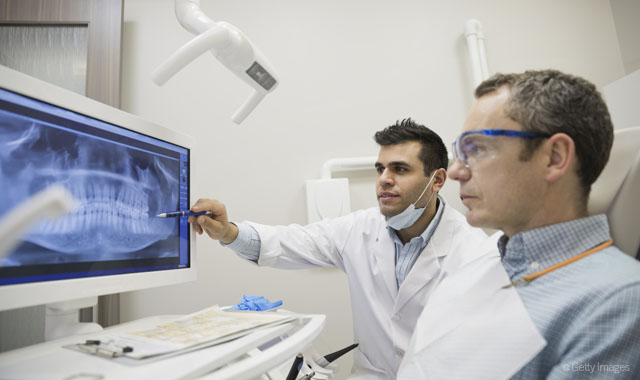How digital scanning increases speed and convenience in the dental practice
We asked with a dental assistant about how the new scanning methodology and technology helps with patient care and satisfaction and how digital impressions are changing (and improving) the workflow for the dental laboratory.

We talked with dental assistant Nicole Calderone, RDAEF2 about her experience with the intraoral scanner she uses at her practice on the Glidewell Laboratories campus.
We asked her how the new scanning methodology and technology helps with patient care and satisfaction and how digital impressions are changing (and improving) the workflow for the dental laboratory.
What role do you play in your practice for impressions?
The doctor will prep the tooth. Not all assistants are allowed to do this, but then I pack the cord around the tooth. Usually I use a cord that has some sort of anesthetic solution in it. I scan the patient, starting with a prepped tooth first and the arch. So if it's the lower tooth, I will scan that tooth, that arch, first. Then I will scan the opposing, the upper and then the bite.
Once I'm done with that, I'll dismiss the patient. I clean up the scan and submit it to the lab. They'll go over the scan and call you if they have any questions. Or, if we're going to mill it here the same day, the doctor makes sure that everything is the exact size and shape that he likes. The patient will come back in an hour and we'll cement the crown.
We scan a lot of implants, too. We scan the abutment inside the implants and we make the crowns as well. We also use it a lot for dentures. The scanner that we have scans soft tissue, too. So we use it for crowns, veneers, fixed bridges, dental implants and for surgical guides.
Related reading: 10 ways to make a great impression
How do you like the scanning methodology and technology?
Compared to taking traditional impressions, it's so nice. You never risk any air bubbles. Also, it's permanent. If you take a traditional impression, the material distorts when you pour it into the stone. It can shrink as well, depending on what material you're using. But with digital impressions, you can use it as many times as you want; it never changes.
You can scan full arches as well, not just one arch. So say they have a crown on the lower left and also in the lower right and in the front anterior, you can just scan the entire arch. You just put it in the mouth and it scans. Even with saliva present, it seems still to pick up everything very nicely.
Once you learn how to use the scanner, it's so fast. And say, for whatever reason, you need the scan in the future, it stays on the computer.
How is digital scanning for patient care and satisfaction?
I've heard nothing but good things from the patients. They're like, "Oh, we hate the gooey." It's better for the patient overall. I've heard no complaints and we scan a patient almost every day here in the office.
Continue to page two for more...
Why doesn't everyone use a digital scanner instead of traditional impressions?
It's a big investment for them. One of the things that the dentists worry about is the industry keeps coming out with new scanners. So the dentists are afraid they'll invest in one and then another new one comes out that is better.
When you do it that way, does it help with the fitting?
It does. With implants, we find that any time we scan and send it off to the lab and the crown has come back, that scan is almost perfect, every time. When we do the traditional impressions, it's not perfect all the time. It involves a lot of parts that are going in and out and if they break anything or anything happens, it's difficult. I can't say how many times I've had to take traditional impressions over.
Related reading: 6 things to keep in mind for successful impressions
How do you think digital impressions change and improve the workflow for the dental lab?
It increases the speed of design and convenience. The patient doesn't have to come back for another appointment later because the crown doesn't fit right-after you waited two weeks to get the crown. In those cases, the doctor has to take another impression, send it back to the lab, and then have the patient come back in another two weeks. With the scanner, we just do a new scan, which takes maybe 10 minutes.
Scanning overall is just so much better. My professor would always say it's the only permanent impression. Because there's no such thing if you do a traditional impression.
ACTIVA BioACTIVE Bulk Flow Marks Pulpdent’s First Major Product Release in 4 Years
December 12th 2024Next-generation bulk-fill dental restorative raises the standard of care for bulk-fill procedures by providing natural remineralization support, while also overcoming current bulk-fill limitations.